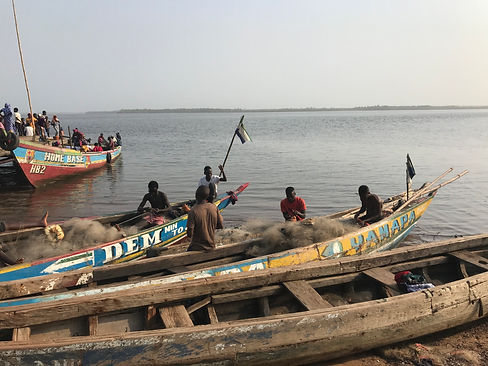Reconnect. Reflect. Reimagine. Recreate.
ROOTS
Bunce Island was considered "the most important historic site in Africa for the United States" because higher prices were paid for enslaved African rice farmers sent to South Carolina, Georgia, and Florida to build rice plantations. As a result, many African Americans whose ancestors are from these states have roots in Sierra Leone. Historians have shown that captives from Bunce Island were also taken to Virginia and other North American Colonies. Enslaved Africans abducted from Sierra Leone were also taken to various Caribbean destinations, including Jamaica, Saint-Domingue (present-day Haiti), Grenada, and Barbados.


PASSAGE
Tasso Island first appeared in the written record in 1635 as the ilha de taco. By the mid-1600s, it had become a contested site between European powers and local rulers. With the founding of the Royal African Company (RAC) in 1660, the British formally established trading posts, or “factories,” on Sherbro, York, Bunce, and Tasso Islands. These semi-fortified compounds were created through negotiations with local chiefs—on Tasso, with the Bullom people of the Lungi Peninsula—and required rent payments to secure the land.
In 1664, Tasso’s first British fort was destroyed by the Dutch fleet, prompting the British to build a stronger fort on nearby Bunce Island. Although Bunce became the region’s dominant slave-trading stronghold, Tasso remained its agricultural and logistical support base.
By the 18th century, the historical record on Tasso becomes thinner, but evidence suggests it continued serving as a support island for Bunce. While Bunce Island is remembered as the infamous hub of the British slave trade, Tasso Island’s history reflects the equally critical functions of agriculture, experimentation, and supply that underpinned the system.
An estimated 381,204 African captives were exported from the Sierra Leone region to the Americas between 1670 and 1850.
Sources: The History of Tasso Island
Slavery and Abolitionism in Sierra Leone

HOMECOMING
Sierra Leone is the ancestral homeland of both freed Africans from the United States and the United Kingdom, and those once shackled aboard ships like the Amistad after slavery was abolished.
In 1787, Britain established the Committee for the Relief of the Black Poor in the “Province of Freedom” in Sierra Leone, settling around 400 men and women from Great Britain. In 1792, conditions for Black Loyalists in Nova Scotia drove another wave of migration. About 1,200 men, women, and children were relocated to Sierra Leone, where they founded the Freetown Colony. Promises of equality and self-governance went largely unfulfilled, but these settlers—together with the earlier community—laid the foundation for Freetown as the capital of Sierra Leone. In 1800, Britain exiled more than 500 Maroons from Jamaica after suppressing the Maroon Wars.
The colony’s growth accelerated after Britain outlawed the transatlantic slave trade in 1807.
Freetown, declared a crown colony the following year, became the base for the Royal Navy’s West Africa Squadron, which intercepted slave ships and freed their captives. Many of these “re-captives” settled in Sierra Leone, creating a diverse community from North America, the Caribbean, and across Africa. From this mix of people emerged the Krio ethnic group, with a distinct language and culture that still defines Sierra Leone’s identity.
Source: Slavery and Remembrance
Today, Sierra Leone is home to sixteen ethnic groups, including the Mende, Temne, Limba, and Kono, each offering a rich tapestry of traditions, music, cuisine, and warm-hearted hospitality.
This is not just a destination—it’s an immersion into the soul of Africa.
